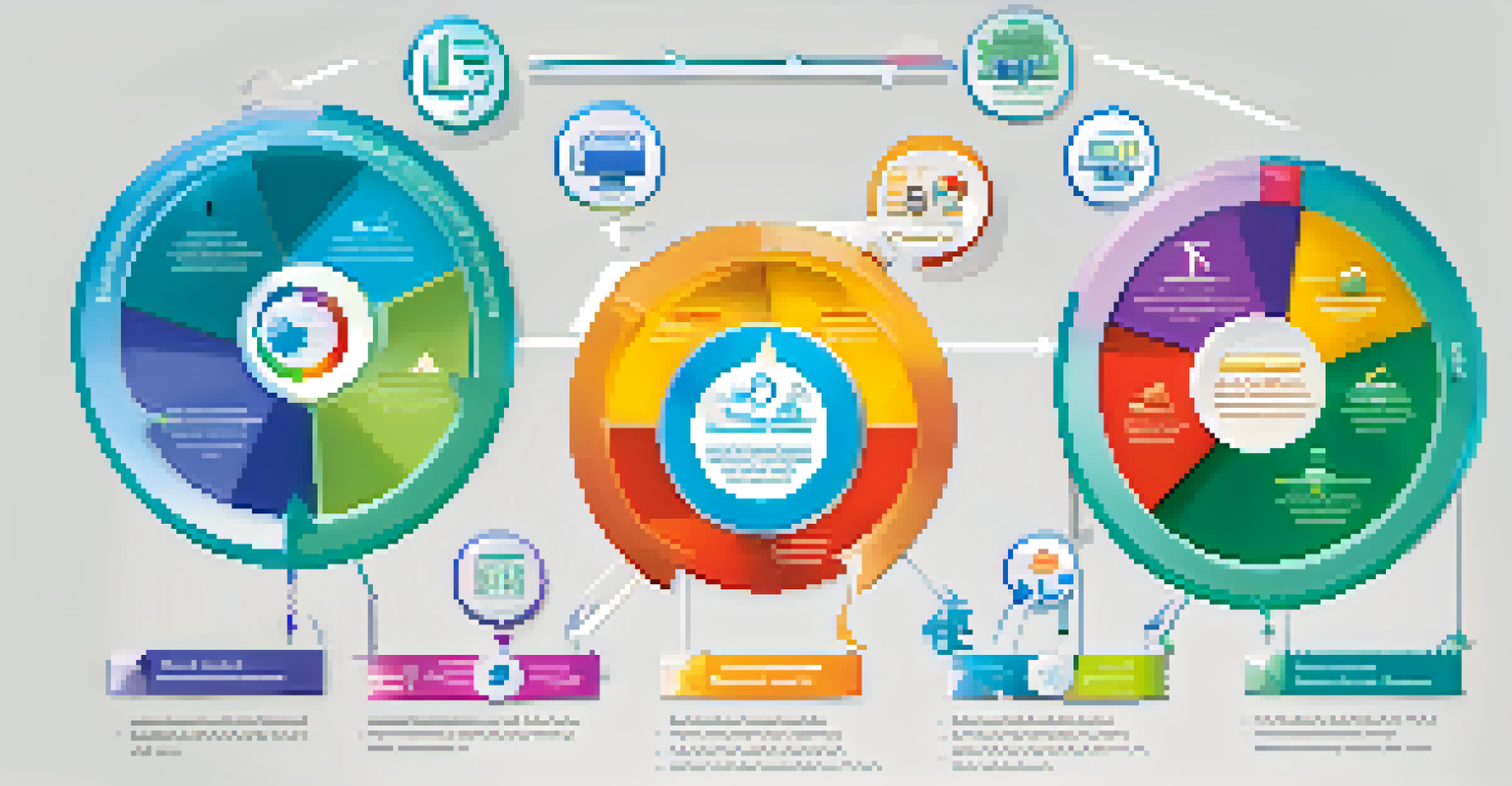The Economics of Implementing Adaptive Learning Technologies

Understanding Adaptive Learning Technologies in Education
Adaptive learning technologies are educational tools that tailor the learning experience to individual students' needs. By using algorithms and data analytics, these systems can adjust content, pacing, and learning paths based on a learner's strengths and weaknesses. This personalization not only enhances engagement but can significantly improve learning outcomes.
Personalized learning is not just a trend; it is a new way of thinking about how we can effectively meet the needs of all learners.
Imagine a classroom where each student has a unique learning plan that evolves in real-time. This is the promise of adaptive learning—where technology meets personalized education. Instead of a one-size-fits-all approach, educators can leverage these tools to provide a more relevant and effective learning experience.
However, understanding what adaptive learning entails is just the first step. Educators and institutions must also consider the economic implications of implementing these technologies. From initial investments to long-term benefits, the financial aspects play a crucial role in decision-making.
Initial Costs of Adaptive Learning Implementation
Implementing adaptive learning technologies can come with significant upfront costs. These may include purchasing software licenses, investing in necessary hardware, and training educators to effectively use the new systems. For many institutions, especially those with tight budgets, these initial expenses can be a daunting hurdle.

However, it's essential to view these costs as an investment rather than just an expense. The right adaptive learning technology can lead to improved student retention and success rates, which ultimately translates into financial benefits. For example, higher graduation rates can lead to increased funding and resources for the institution.
Investing in Adaptive Learning Pays Off
While initial costs can be high, adaptive learning technologies lead to long-term financial benefits through improved student outcomes and operational efficiency.
In considering these initial costs, schools and universities must conduct a thorough cost-benefit analysis. By projecting potential long-term savings and gains, decision-makers can better understand the value of investing in adaptive learning technologies.
Long-term Financial Benefits of Adaptive Learning
While the initial costs may seem high, the long-term financial benefits of adaptive learning technologies can be substantial. Studies have shown that personalized learning environments can lead to increased student performance, which can enhance an institution's reputation and attract more students. This, in turn, can boost revenue through tuition and funding.
The greatest benefit of adaptive learning technology is that it allows educators to provide personalized learning experiences that can significantly improve student outcomes.
Additionally, adaptive learning can reduce the resources needed for remediation. When students receive the right support at the right time, they are less likely to fall behind and require additional help later on. This proactive approach can save institutions money on tutoring and support services.
Furthermore, by optimizing the learning experience, institutions can improve operational efficiency. Adaptive learning can streamline curriculum design and reduce the time educators spend on administrative tasks, allowing them to focus more on teaching.
Impact on Student Outcomes and Retention Rates
One of the most compelling arguments for investing in adaptive learning technologies is their positive impact on student outcomes. Research indicates that personalized learning can lead to higher engagement levels, better retention of information, and improved academic performance. When students feel supported and understood, they are more likely to stay motivated and committed to their studies.
Moreover, adaptive learning technologies can significantly enhance retention rates. By identifying students who are struggling and providing targeted interventions, these systems can help at-risk learners stay on track. Higher retention rates not only benefit students but also contribute to the overall success of educational institutions.
Personalization Boosts Student Success
Adaptive learning technologies enhance engagement and retention rates by tailoring educational experiences to individual student needs.
Ultimately, the correlation between adaptive learning and improved student outcomes is a critical factor in the economic equation. When students succeed, institutions thrive, creating a win-win scenario for all stakeholders involved.
Training and Support Costs for Educators
An often-overlooked cost of implementing adaptive learning technologies is the training and support required for educators. Teachers need to be equipped not only with the technical skills to use these systems but also with the pedagogical knowledge to integrate them effectively into their teaching practices. Investing in comprehensive training programs can help maximize the potential of adaptive learning.
For example, professional development workshops can provide educators with hands-on experience and strategies for utilizing adaptive learning tools. This kind of preparation can lead to greater confidence and willingness to embrace new technologies in the classroom. The more comfortable educators are, the more likely they are to implement adaptive learning effectively.
Moreover, ongoing support is essential as technology evolves and new features are introduced. Institutions must budget for continuous professional development to keep educators updated and engaged with adaptive learning technologies.
Measuring ROI: A Complex Process
Measuring the return on investment (ROI) for adaptive learning technologies can be a complex process. It involves not only assessing tangible factors like cost savings and increased revenue but also intangible benefits such as improved student satisfaction and institutional reputation. This multifaceted approach can make it challenging to quantify the full impact of these technologies.
Institutions may use various metrics to evaluate ROI, including graduation rates, course completion rates, and student engagement levels. By analyzing these data points, they can gain insight into how adaptive learning is influencing student success and institutional performance. However, this requires a robust data collection and analysis framework.
Training is Key to Effective Use
Comprehensive training and ongoing support for educators are essential to maximize the potential of adaptive learning technologies in the classroom.
Ultimately, understanding ROI is crucial for justifying the investment in adaptive learning technologies. With clear metrics and goals in place, institutions can make informed decisions that support their educational missions and financial sustainability.
Future Trends in Adaptive Learning Economics
As technology continues to evolve, the landscape of adaptive learning is likely to change dramatically. Emerging trends such as artificial intelligence and machine learning are set to further enhance the personalization of education. These advancements could lead to even greater cost savings and improved learning outcomes, making adaptive learning technologies more accessible to a wider range of institutions.
For instance, as AI becomes more integrated into adaptive learning systems, the ability to analyze student data in real-time will improve. This could enable even more precise tailoring of educational content, helping students achieve their learning goals faster and more efficiently. Such developments could ultimately reduce the long-term costs associated with education.

As we look to the future, it's essential for educational institutions to stay informed about these trends. By being proactive and adaptable, they can harness the full potential of adaptive learning technologies, ensuring both financial viability and enhanced student success.